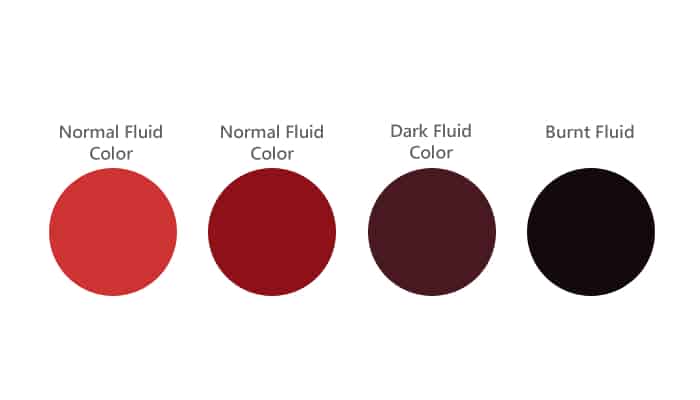Understanding Transmission Fluid for Your Chevy Impala
When it comes to maintaining your 2002 Chevy Impala, one of the most crucial aspects is ensuring that you use the correct transmission fluid. Using the right fluid not only keeps your transmission running smoothly but also prolongs its life. Let’s dive into the specifics of what you need to know about transmission fluid for your Impala.
Manufacturer’s Recommendations
| Popular posts |
|---|
| What to do to prolong the life of your manual gearbox |
| Automatic transmission: what it is, how it works |
The manufacturer recommends using Dexron III or Dexron VI automatic transmission fluid for the 2002 Chevy Impala. This specification is critical because using the wrong type of fluid can lead to transmission issues, including slipping, overheating, or even complete failure.
Why Dexron III or VI?
– Compatibility: Dexron III and VI are designed to work with the specific components of your Impala’s transmission. They provide the necessary lubrication, cooling, and cleaning properties that your transmission needs to function effectively.
– Performance: These fluids are formulated to maintain their viscosity under various temperature conditions, ensuring that your transmission operates smoothly whether you’re driving in the heat of summer or the chill of winter.
– Additives: Both Dexron III and VI contain additives that help prevent wear and tear on transmission components, reduce foaming, and improve overall performance. This means your transmission will not only run better but will also last longer.
Fluid Specifications
Here are the key specifications for the recommended transmission fluids:
| Fluid Type | Viscosity | Color | Typical Applications |
|---|---|---|---|
| Dexron III | Multi-viscosity | Red | Older GM vehicles, some imports |
| Dexron VI | Multi-viscosity | Red | Newer GM vehicles, improved performance |
Fluid Characteristics
– Temperature Stability: Both Dexron III and VI maintain their properties across a wide temperature range, which is essential for the longevity of your transmission.
– Oxidation Resistance: These fluids resist breakdown over time, which helps in maintaining the performance of your transmission.
– Foam Control: The additives in these fluids help to prevent foaming, ensuring that the transmission remains properly lubricated even under high-stress conditions.
Where to Find the Right Fluid
You can find Dexron III and VI fluids at most auto parts stores, as well as online retailers. Always check the label to ensure it meets the necessary specifications. If you’re unsure, consult your owner’s manual or ask a trusted mechanic.
Using the correct transmission fluid is not just a recommendation; it’s a necessity for the health of your vehicle. By sticking to the manufacturer’s specifications, you can avoid costly repairs and keep your Chevy Impala running smoothly for years to come.
Recommended Oil Brands for Your Chevy Impala
When it comes to choosing the right transmission fluid for your 2002 Chevy Impala, the brand can make a significant difference in performance and longevity. Many owners have shared their experiences on forums and in discussions, and certain brands consistently come up as favorites. Let’s explore some of the most recommended oil brands based on owner feedback and experiences.
Top Brands for Transmission Fluid
Here are some of the most commonly recommended brands for transmission fluid that meets the Dexron III or VI specifications:
-
AC Delco
AC Delco is the original equipment manufacturer (OEM) for GM vehicles, including the Chevy Impala. Many owners swear by their Dexron VI fluid, citing its excellent performance and compatibility with their transmissions. Users report smoother shifting and improved overall performance after switching to AC Delco.
-
Mobil 1
Mobil 1 is well-known for its high-quality synthetic oils, and their synthetic Dexron VI fluid is no exception. Many Impala owners have praised its ability to reduce wear and tear on the transmission, especially in extreme driving conditions. Users often report a noticeable difference in shifting quality after using Mobil 1.
-
Valvoline
Valvoline’s Dexron VI fluid is another popular choice among Chevy Impala owners. Many users appreciate its affordability without compromising quality. Feedback often highlights its effectiveness in maintaining smooth operation and preventing overheating, making it a solid option for everyday driving.
-
Castrol
Castrol offers a range of transmission fluids, including those that meet Dexron specifications. Owners have noted that Castrol fluids tend to perform well under various conditions, providing reliable protection and performance. Many users have reported positive experiences with their Dexron VI fluid, particularly in terms of shifting smoothness.
-
Royal Purple
Royal Purple is known for its high-performance synthetic oils, and their transmission fluid is no different. While it may be on the pricier side, many owners believe the benefits justify the cost. Users often report enhanced performance and improved fuel efficiency after switching to Royal Purple.
Owner Experiences and Feedback
The automotive community is rich with shared experiences, and many Impala owners have taken to forums to discuss their preferred transmission fluids. Here are some common themes and insights gathered from these discussions:
-
Performance Improvements
Many owners have noted significant improvements in shifting performance after switching to recommended brands. Smooth shifts and reduced lag are frequently mentioned benefits.
-
Temperature Management
Several users have reported that certain brands, particularly synthetic options, help manage transmission temperatures better. This is especially important for those who drive in hot climates or engage in towing.
-
Longevity of Transmission
Owners often share stories of extended transmission life after using high-quality fluids. Many believe that investing in a reputable brand has saved them from costly repairs down the line.
-
Cost vs. Quality
While some owners are willing to pay a premium for top-tier brands like Royal Purple, others find that more affordable options like Valvoline or AC Delco still deliver excellent results. The consensus seems to be that you don’t always have to break the bank to get good quality.
-
Personal Preferences
Ultimately, personal experience plays a significant role in brand preference. Some owners stick to what they know, while others are open to experimenting with different brands based on recommendations from fellow enthusiasts.
Where to Buy
You can find these recommended brands at various retailers, including auto parts stores, big-box retailers, and online marketplaces. Always check for the specific Dexron III or VI certification on the label to ensure compatibility with your 2002 Chevy Impala.
Choosing the right transmission fluid brand can make a noticeable difference in your vehicle’s performance and longevity. By considering the experiences of fellow owners, you can make an informed decision that best suits your driving needs.
Change Interval for Your Chevy Impala Transmission Fluid
Maintaining your 2002 Chevy Impala’s transmission fluid is essential for ensuring optimal performance and longevity. Understanding the change interval is crucial for keeping your transmission in good working order.
Recommended Change Intervals
For the 2002 Chevy Impala, the general recommendation for changing the transmission fluid is every 30,000 to 60,000 miles (approximately 48,000 to 96,000 kilometers). However, this can vary based on driving conditions and habits. Here are some factors to consider:
-
Driving Conditions
– If you frequently drive in stop-and-go traffic, tow heavy loads, or operate in extreme temperatures, you may need to change your fluid more often.
-
Type of Fluid Used
– Synthetic fluids may offer longer intervals between changes compared to conventional fluids. Always refer to the manufacturer’s guidelines for specific recommendations.
-
Transmission Performance
– If you notice any signs of transmission issues, such as slipping or rough shifting, it may be time to change the fluid, regardless of mileage.
Partial Transmission Oil Changes
In many cases, a full transmission fluid change requires removing the transmission from the vehicle, which can be a labor-intensive and costly process. This is where partial transmission oil changes come into play.
What is a Partial Change?
A partial transmission oil change involves draining a portion of the old fluid and replacing it with new fluid without completely removing the transmission. This method is often more practical and less expensive.
Benefits of Partial Changes
– Cost-Effective: Since a full fluid change often requires specialized equipment and labor, a partial change is a more budget-friendly option.
– Easier Maintenance: Partial changes can be performed more frequently, allowing you to keep your transmission fluid fresh without the need for extensive labor.
– Gradual Fluid Refresh: Over time, partial changes can help maintain a cleaner transmission fluid environment, as new fluid is consistently introduced.
Statistical Justification
According to the American Transmission Rebuilders Association (ATRA), regular maintenance, including fluid changes, can significantly extend the life of your transmission. A study indicated that vehicles with regular fluid changes experienced fewer transmission failures and repairs, with a failure rate reduced by up to 50% compared to those that neglected fluid maintenance.
Moreover, the ATRA recommends that even if a full fluid change isn’t feasible, performing partial changes regularly can help mitigate the risks associated with old, degraded fluid. This approach allows for the gradual removal of contaminants and helps maintain the transmission’s overall health.
Conclusion
Understanding the change interval for your transmission fluid and considering partial changes can greatly benefit the longevity and performance of your 2002 Chevy Impala. Regular maintenance is key to avoiding costly repairs down the line.
What Color Should Transmission Fluid Be?


